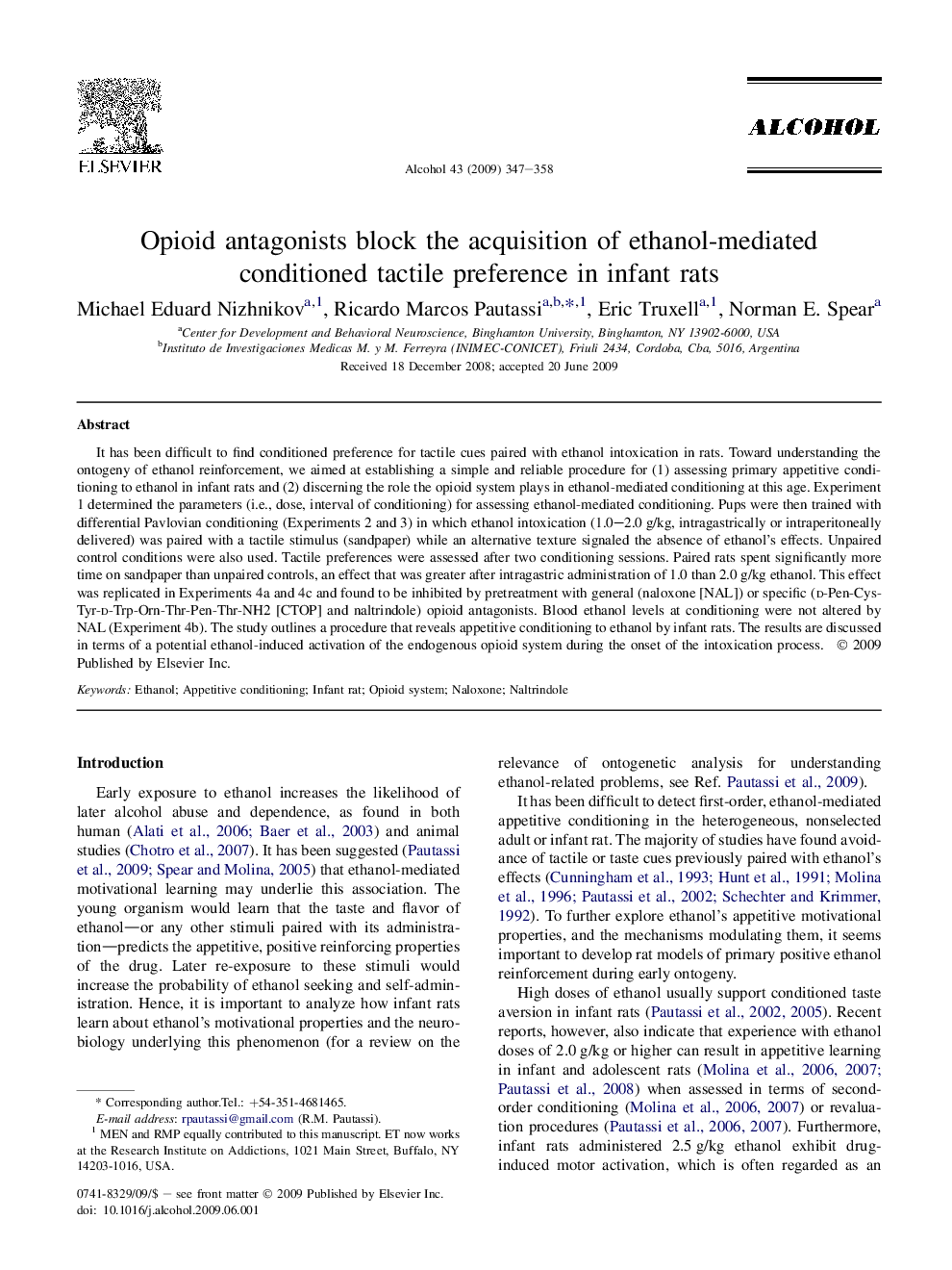| Article ID | Journal | Published Year | Pages | File Type |
|---|---|---|---|---|
| 1067370 | Alcohol | 2009 | 12 Pages |
Abstract
It has been difficult to find conditioned preference for tactile cues paired with ethanol intoxication in rats. Toward understanding the ontogeny of ethanol reinforcement, we aimed at establishing a simple and reliable procedure for (1) assessing primary appetitive conditioning to ethanol in infant rats and (2) discerning the role the opioid system plays in ethanol-mediated conditioning at this age. Experiment 1 determined the parameters (i.e., dose, interval of conditioning) for assessing ethanol-mediated conditioning. Pups were then trained with differential Pavlovian conditioning (Experiments 2 and 3) in which ethanol intoxication (1.0-2.0Â g/kg, intragastrically or intraperitoneally delivered) was paired with a tactile stimulus (sandpaper) while an alternative texture signaled the absence of ethanol's effects. Unpaired control conditions were also used. Tactile preferences were assessed after two conditioning sessions. Paired rats spent significantly more time on sandpaper than unpaired controls, an effect that was greater after intragastric administration of 1.0 than 2.0Â g/kg ethanol. This effect was replicated in Experiments 4a and 4c and found to be inhibited by pretreatment with general (naloxone [NAL]) or specific (d-Pen-Cys-Tyr-d-Trp-Orn-Thr-Pen-Thr-NH2 [CTOP] and naltrindole) opioid antagonists. Blood ethanol levels at conditioning were not altered by NAL (Experiment 4b). The study outlines a procedure that reveals appetitive conditioning to ethanol by infant rats. The results are discussed in terms of a potential ethanol-induced activation of the endogenous opioid system during the onset of the intoxication process.
Related Topics
Life Sciences
Biochemistry, Genetics and Molecular Biology
Biochemistry
Authors
Michael Eduard Nizhnikov, Ricardo Marcos Pautassi, Eric Truxell, Norman E. Spear,
